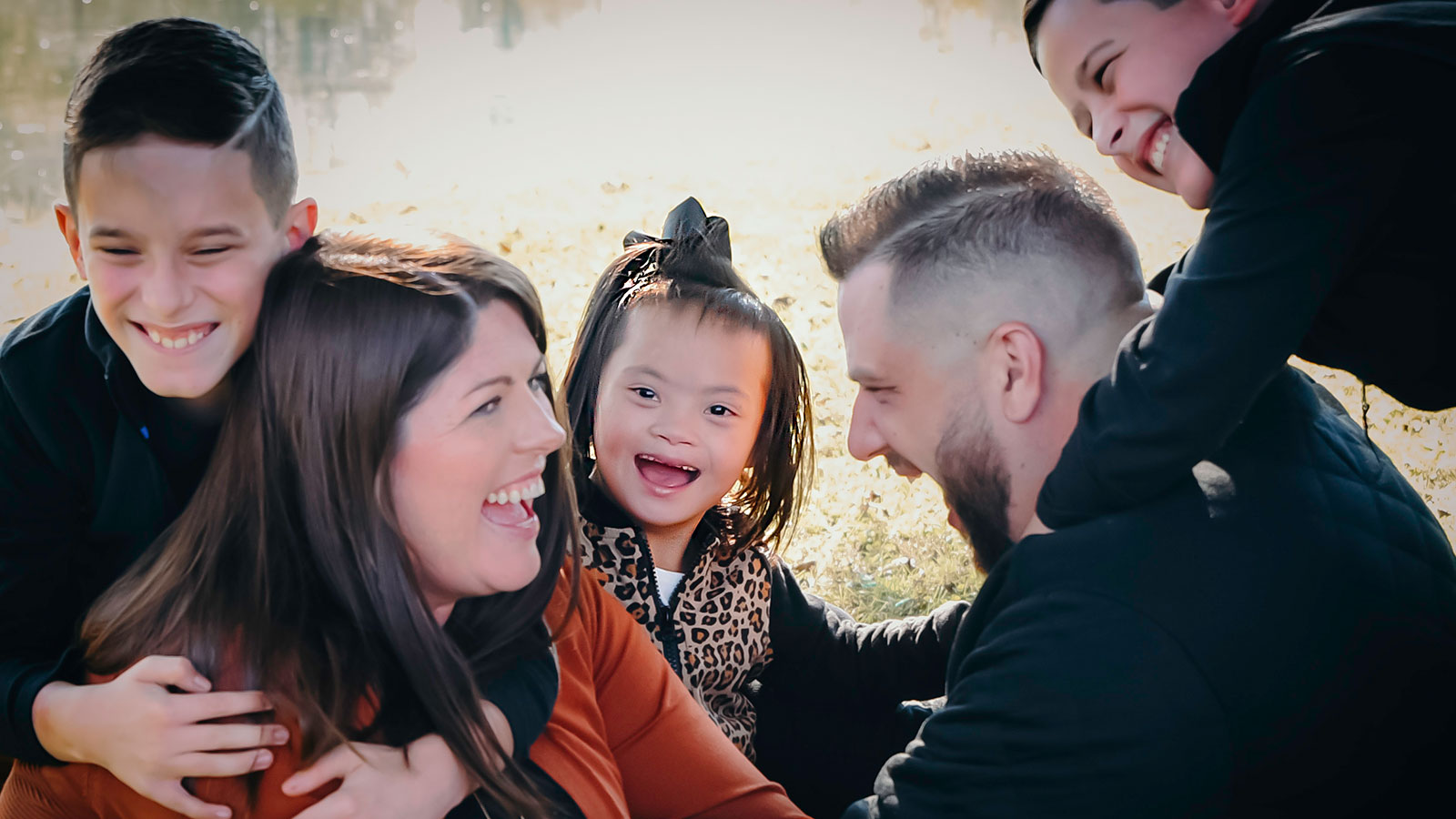Holt social worker Carolyn Cain provides tips and examples for how to apply the Trust-Based Relational Intervention (TBRI)® parenting approach for children from hard places.

Trust-Based Relational Intervention (TBRI®) is a popular parenting approach among adoptive and foster parents who are raising kids who have experienced trauma — kids who come “from hard places.” The TBRI® principles were developed by Dr. Karyn Purvis and Dr. David Cross of Texas Christian University and are found in the book “The Connected Child,” which Holt began encouraging parents to read almost a decade ago.
Many times, however, parents read this book several years before their child comes home and the concepts have been long forgotten once they are actually in the throes of parenting their son or daughter.
In a nutshell, TBRI® is based on these three basic parenting principles: Empower, Connect and Correct. The principle of Empowering centers on addressing the child’s physical needs. If your child has hunger, thirst or other imbalances in their body, these will all affect behaviors and how they respond to you. The second principle, Connecting, focuses on understanding and meeting attachment needs. Your child needs to know that you really see them and not just their behavior. And lastly, the Correcting principles are techniques used to disarm fear-based behaviors. TBRI® is one of few evidence-based models designed for parents and caregivers that is proven to help children heal from past traumas.
The key to healing, according to TBRI, is through connected relationships.
Our goal in parenting a child from a difficult background is to provide them a place where they can heal from the traumas of their past so they can find peace in the present — and look forward to healthy future relationships.
Far too often, parents think discipline needs to include an element of pain for it to be effective. But when I think of discipline, I think of the root word — to “disciple,” or teach or correct. It is not to punish or cause pain. Kids from hard places do not need punishment. They need connection, especially in the hardest of moments or meltdowns. The goal is to teach and reach them within the context of connected relationships so they can heal and grow to their God-given potential, not cause them further pain or trauma. We never want kids to walk away from parental interactions with shame, embarrassment or fear. Our goal in parenting a child from a difficult background is to provide them a place where they can heal from the traumas of their past so they can find peace in the present — and look forward to healthy future relationships.

For children, behavior is communication. It is helpful to look at behaviors as the tip of the iceberg — what we see and experience. However, underneath the iceberg is a whole host of possible issues: stress, anxiety, fear, hunger, sleep, attention, emotions, need for connection, sensory need, sadness, environmental stressors, medical issues. The list could go on and on! It’s our job as parents to be the detective and figure out what the need is behind the behavior.
How to Put TBRI Into Practice
I often hear from parents who have a difficult time taking some of the TBRI® concepts and putting them into action. What is the actual practical application of the principles? Children who come from hard places often struggle with a history of not having a voice or a choice. So when asked to do something, their response might seem like an overreaction to people who don’t understand trauma. There are many simple scripts, techniques and principles that parents can learn and practice, and then apply in the heat of the moment. When TBRI® principles are put into action, they can look like this.
Compromise
If little Johnny is on the computer and you tell him it’s time to take a shower, he might melt down (especially if he is like my son and playing Roblox!). Teaching your child the concept of “Would you like a compromise?” tells them that their thoughts and opinions matter. How could we approach this scenario in a way that gives your child a voice? This is what it recently looked like for my 10-year-old son. When I asked him to please go shower at 7:20 p.m., he responded, “Mom, I have a counter offer of 7:30 p.m.” (He’s been watching a little too much Shark Tank.) I let him shower at 7:30 p.m. because I wanted him to know that this isn’t a dictatorship and that I hear him and his desires. This builds a culture of cooperation by giving the child a voice, which then in turn can help them stay regulated.
Give choices
When possible, offer your child a choice, such as, “Would you like a shower or a bath tonight?” Giving them options also piggybacks on the idea that they are heard and given a voice. Make sure that the choices you offer are suitable to the child and to you, so that you’re not pitting the right choice against the wrong one. Choices should not be used as a threat or consequence (ex. “Shower or No TV”). The goal is to keep your child calm and engaged. While the threat of a consequence may offer temporary compliance, it won’t lead to longer-term behavioral change. And side note: remember if you are not getting a response, use fewer words. It’s easier for a child’s brain to process. “Shower or bath?” works just fine and gets the point across.
Try again with respect
TBRI® principles are rooted in respect; a child needs to grow to respect the parent and the parent needs to respect the child. It’s hard for a wounded child to trust a parent enough to respect them. Children who have never been treated with respect genuinely have no concept of what that looks like. When a child is acting disrespectful, they need to have respect modeled but they also need chances to practice using respect with their bodies and words. Using the phrase “Let’s try that again with respect” gives them an opportunity to ask again but in a respectful manner. If their bodies (faces, arms, etc) and their words aren’t respectful, encourage them to show respect with their body, face and words.
Remember, praise even the smallest of change.
Our kids need an extra amount of praise for what they are doing right, even if it’s just a baby step.
Try using play to teach your child what respect and disrespect look like. You can act out doing something ‘with respect’ and then ‘with no respect’ using puppets or any toy. Also, remember that children retain messages learned through play, but not when the lesson is given when they’re dysregulated. In other words, there is a time and place for using playful interactions. When your child is in the middle of a full-blown meltdown, their brains can’t receive messages — even through play — so make sure the timing is right for teachable moments.
Are you asking or telling me?
This is another simple script that I find myself using a lot these days. When my son was ready to go to basketball practice the other day, he yelled across the house, “Let’s go!” I playfully said to him, “Are you asking or telling me?” and after taking a quick mental survey, he said, “Can we please go now, mom?” Again, there are some scripts that you might find more comfortable saying within your family culture. Sometimes when my son sounds demanding, for example, I’ll say something like this to him — “Yikes that sounds pretty bossy” — and it conveys the same message. When he’s receptive, he’ll respond well to the more playful interaction by then rephrasing his request. By allowing him the opportunity to re-do his response, it helps reinforce the relational respect that we value as a family and reminds our kids of the skills that they are learning.
Remember that TBRI® principles are not for admonishing negative behaviors.
They are for recognizing and encouraging positive behaviors and giving an opportunity for your child’s brain to be re-trained.
Our kids need to hear lots and lots and lots of positives. We can use playful engagement in our responses. This disarms fear. (But alas, this is a topic for another day.)
Learn More About TBRI
Hopefully this has whet your appetite to learn more about TBRI® and how you can use these techniques with your child! There are many other TBRI® techniques and principles you can learn to implement. You can find them described at length in the new, easy-to-read book, “The Connected Parent,” by Dr. Karyn Purvis and Lisa Qualls.
Connected parenting is not easy and it takes a lot of effort to make it work. But it is possible! I have seen it with others, and experienced it in my own relationships. And remember, we are here during your parenting journey to help you reach your goals in building and sustaining healthy, connected parent-child relationships.
Carolyn Cain, MSW | Holt Social Worker

Receive Post Adoption Coaching & Education
All parents encounter challenges as their children grow up. And sometimes, issues may arise that leave you uncertain as to how best to respond. But not every issue requires therapy or counseling. The PACE program is here to help during those times.

